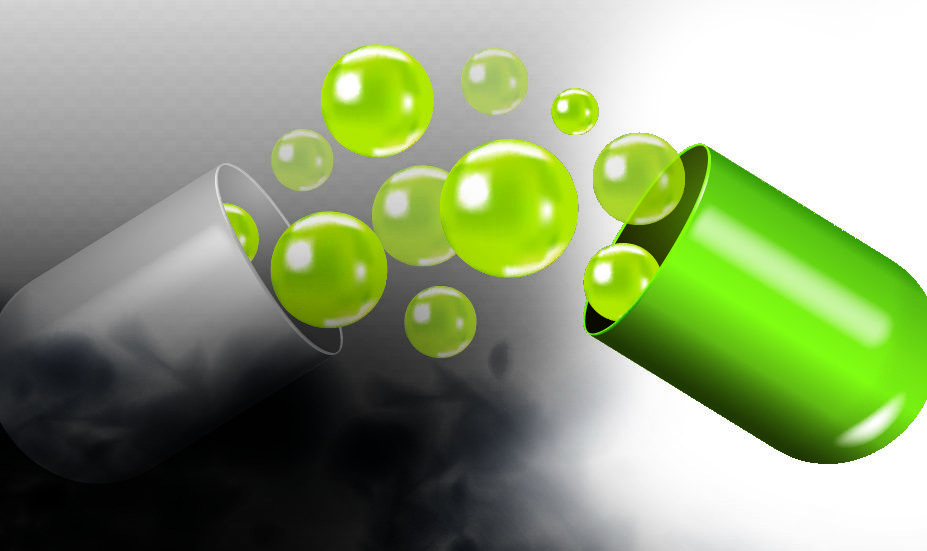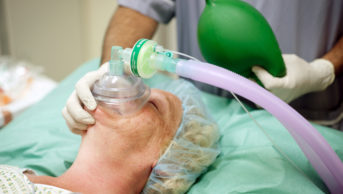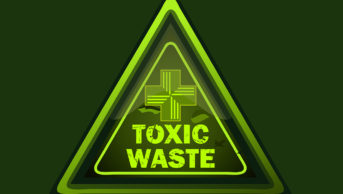
Mclean
To coincide with the 2021 United Nations Climate Change Conference, also known as COP26, held in Glasgow from 31 October to 13 November 2021, the Royal Pharmaceutical Society launched its sustainability policies[1].
The policies are to be commended and I am particularly impressed with the call for the environmental risk of medicines to be considered in NHS prescribing guidance and formularies.
This comes as all four nations of the UK have committed that their health systems will reach net zero carbon emissions within the coming years, as part of the global effort to address climate change[2].
In England, the NHS has set two main targets: to become net zero by the year 2040 for emissions it controls directly (the ‘NHS carbon footprint’) and to achieve net zero by 2045 for emissions it influences but does not directly control (the ‘NHS carbon footprint plus’)[3].
Estimates indicate that medicines account for 25% of total carbon emissions within the NHS, and the health service has chosen to focus on two groups — anaesthetic gases, which make up 2% of these emissions, and inhalers, which account for 3%.
There are similar targets in the other devolved nations.
However, there seems to be a blind spot in the health service’s environmental ambitions — generic medicines.
The NHS benefits hugely from low-cost generic medicines. In England, 81% of all drugs in primary care are already prescribed generically, generating significant savings for the NHS[4]. In 2015, the King’s Fund estimated that — with all other things being equal — increasing generic prescribing has saved the NHS around £7.1bn since 1976 and allowed 490 million more items to be prescribed without an increase in total spending[5]. The British Generic Manufacturers Association has estimated that the NHS now saves £13bn a year in England and Wales through the use of generic medicines[6].
This is a fantastic success story for the NHS but it has come at a cost, not borne by us but by other nations.
Off-shore sources
The NHS’s addiction to cheap generic medicines and the commoditisation of the generic medicine supply chain is driving a race to the bottom. Offshoring has been the default approach to driving down the cost of manufacture. It is estimated that 70–90% of all generic medicines supplied in the UK have been sourced, at least in part, from India and China[7,8].
India’s Ministryof Environment, Forest and Climate Change has classified pharmaceutical manufacturing as a ‘red category’ activity, indicating that it produces the highest levels of pollution. Indeed, successive studies have shown that air, water and soil in Telangana state, a centre for pharmaceutical manufacture, are significantly contaminated by toxic chemicals and heavy metals, such as copper, lead, mercury and arsenic[9].
In the United Nations (UN) Environmental Programme ‘Frontiers 2017 — emerging issues of environmental concern’ report, the UN identifies growing antimicrobial resistance (AMR), linked to the discharge of drugs and particular chemicals into the environment, as one of the most worrying health threats[10]. At the report’s launch, Erik Solheim, environment executive director for the UN, drew particular attention to a pharmaceutical facility in Hyderabad, India, where testing of discharged water revealed that the concentration in the treated wastewater of ciprofloxacin was strong enough to treat 44,000 people[11].
In January 2020, the Indian Ministry of Environment, Forest and Climate Change published a draft bill that sought to introduce limits on the concentrations of antibiotics permitted in wastewater released by pharmaceutical factories. Unfortunately, in April 2021, The New Indian Express reported that a year after issuance of the draft bill, the Ministry could not come up with any norms for limiting antibiotics discharged by the industry, owing to a lack of available research on the subject, and the bill was dropped[12].
The Yangtze and Pearl rivers have been shown to contain significant levels of antibiotics, with levels as high as 1,080ng/L
The picture is similar in China, home to the largest concentration of active pharmaceutical ingredient (bulk drug) manufacturers. China does have extensive environmental protection laws and a record of enforcement but, despite this, antibiotics have been detected in studies of residents’ tap water and in China’s major rivers. For example, in Nanjing, China’s Jiangsu Province, two antibiotics (amoxicillin [8ng/L] and 6-aminopenicillanic acid [19ng/L]) were found in tap water. More antibiotics were found in tap water in cities of Anhui Province, and the Yangtze and Pearl rivers have been shown to contain significant levels of antibiotics, with levels as high as 1,080ng/L — potentially engendering bacterial resistance in human beings and rendering many drugs ineffective. In the United States, France and the UK, this level is usually lower than 20ng/L in rivers[13].
The NHS in Scotland is trialling ways of removing traces of pharmaceuticals from hospital wastewater, but what about the manufacturing process? And what about other countries? Are we happy for our medicines to be produced at the expense of the environment, as long as it’s someone else’s environment?
Time to take responsibility
For too long we have turned a blind eye to the cost of our medicines for the sake of ever-reducing prices. The focus on sustainability and the NHS drive to net zero emissions is a great opportunity to change direction and stop the pharmaceutical pollution of our environment.
Effective regulation and a new approach to the synthesis of medicines can together stem the tide of environmental pollution from medicine production. Green chemistry is “the design of chemical products and processes that reduce or eliminate the generation of hazardous substances”[14]. The 12 principles of green chemistry focus on developing manufacturing processes that are more energy efficient, use less of the earth’s resources, generate less waste and reduce the environmental impact of medicine manufacture. The concept serves as a roadmap to develop sustainable manufacturing processes for medicines. A great example is the synthesis of the therapeutic peptide etelcalcetide, the active ingredient in Parsabiv, a calcium inhibitor to help control overactivity of the thyroid gland in patients with kidney disease. The new process produces more peptide in less time, while drastically cutting solvent and water use, and reducing production costs. Despite the strong business case for green chemistry, wider adoption has stalled[15].
Green chemistry has the potential to eliminate the discharge of harmful chemicals into the environment
There is also the problem of existing medicines. Thousands of generic medicines were designed, developed, and launched prior to the emergence of green chemistry. Most of these medicines could be manufactured using processes that produce a fraction of the waste they currently do if they were redeveloped using green chemistry principles. In addition, green chemistry has the potential to eliminate the discharge of harmful chemicals into the environment. The development of new manufacturing processes will reduce the cost of long-term manufacture but it has an upfront cost and the industry needs to have an incentive to make that upfront investment. The NHS must break its addiction to buying the cheapest generic medicines to make this happen.
If the NHS is serious about its desire to be net zero and protect the environment, then it needs to fundamentally review the way generic medicines are procured. Price must not be the sole determinant. Environmental impact and sustainability must play an equal part in purchasing decisions. This means a change from bargain basement shopping to long-term procurement based on a balanced economic and environmental scorecard.
Currently, there is no way for an individual pharmacist to know whether the medicine they have purchased has been produced at the expense of the environment, whether it has contributed to the growth of AMR or whether it is poisoning populations local to the manufacturing facility.
We should build sustainability into the purchasing decision. Community pharmacy reimbursement is long overdue a radical overhaul and a move away from a model that requires the never-ending search for the lowest priced generic medicines is a great opportunity to transform how community pharmacy is commissioned and rewarded. NHS procurement could centrally source and distribute essential generic medicines to pharmacies from suppliers audited for their environmental performance, or our post-Brexit regulatory framework could introduce an environmental requirement at the licensing stage that is ranked as highly as safety, quality and efficacy.
A new approach that ensures the highest environmental performance from all our medicine manufacturers is absolutely essential if the NHS is to have a fighting chance of hitting its ambitious emission targets.
I hope that the increased focus on sustainability and net zero emissions will measure the impact beyond our shores and seek to ensure we take account of the total cost, and not just the price, of our medicines.
- 1Sustainability Policies. Royal Pharmaceutical Society. https://www.rpharms.com/recognition/all-our-campaigns/policy-a-z/sustainability-policy/policies (accessed Jan 2022).
- 2Department of Health and Social Health. UK health services make landmark pledge to achieve net zero. Gov.uk. 2021.https://www.gov.uk/government/news/uk-health-services-make-landmark-pledge-to-achieve-net-zero (accessed Jan 2022).
- 3Delivering a ‘Net Zero’ National Health Service. NHS England. 2020.https://www.england.nhs.uk/greenernhs/wp-content/uploads/sites/51/2020/10/delivering-a-net-zero-national-health-service.pdf (accessed Jan 2022).
- 4Medicines Optimisation – Generic Prescribing Key Messages. NHS Business Services Authority . 2020.https://www.nhsbsa.nhs.uk/sites/default/files/2018-10/Generic%20Prescribing%20Key%20Messages%20%284%29%20PDF.pdf (accessed Jan 2022).
- 5How much has generic prescribing and dispensing saved the NHS? The Kings Fund. https://www.kingsfund.org.uk/blog/2015/07/how-much-has-generic-prescribing-and-dispensing-saved-nhs (accessed Jan 2022).
- 6About generics. British Generics Manufacturers Association. 2020.https://www.britishgenerics.co.uk/about-generics.html (accessed Jan 2022).
- 7Tapper J. Drug manufacturing must be brought to UK, NHS bosses and charities tell MPs. The Guardian. 2020.https://www.theguardian.com/business/2020/may/10/bring-drug-manufacturing-to-uk-nhs-mps (accessed Jan 2021).
- 8Hannay M, Badman C. Professor Mike Hannay and Mr Clive Badman – Written Evidence (LBC0038). Parliament Committees. 2020.https://committees.parliament.uk/writtenevidence/8844/pdf/ (accessed Jan 2022).
- 9Hyderabad’s pharmaceutical pollution crisis. Changing Markets Foundation. 2018.https://changingmarkets.org/wp-content/uploads/2018/02/CM-HYDERABAD-s-PHARMACEUTICAL-POLLUTION-CRISIS-FINAL-WEB-SPREAD.pdf (accessed Jan 2022).
- 10FRONTIERS 2017: EMERGING ISSUES OF ENVIRONMENTAL CONCERN. United Nations Environment Programme . 2017.https://wedocs.unep.org/handle/20.500.11822/22255;jsessionid=22CEE2A1E3CD6DF39F1AFB998562FEBC (accessed Jan 2022).
- 11Larsson DGJ. Pollution from drug manufacturing: review and perspectives. Phil. Trans. R. Soc. B. 2014;369:20130571. doi:10.1098/rstb.2013.0571
- 12Move to set standards for pharma pollution fails. The New Indian Express . 2021.https://www.newindianexpress.com/thesundaystandard/2021/apr/04/move-to-set-standards-for-pharma-pollution-fails-2285428.html (accessed Jan 2022).
- 13Huang R, Ding P, Huang D, et al. Antibiotic pollution threatens public health in China. The Lancet. 2015;385:773–4. doi:10.1016/s0140-6736(15)60437-8
- 14Basics of Green Chemistry. United States Environmental Protection Agency. https://www.epa.gov/greenchemistry/basics-green-chemistry (accessed Jan 2022).
- 15Zhang W, Cue BW, editors. Green Techniques for Organic Synthesis and Medicinal Chemistry. John Wiley & Sons, Ltd 2018. doi:10.1002/9781119288152


